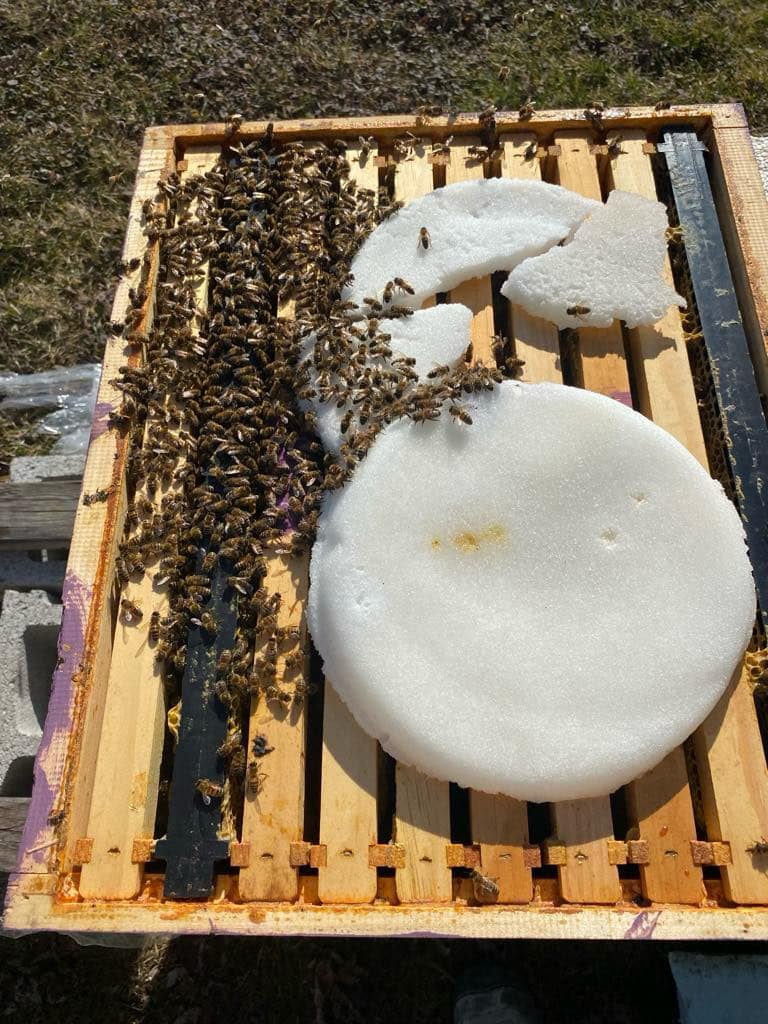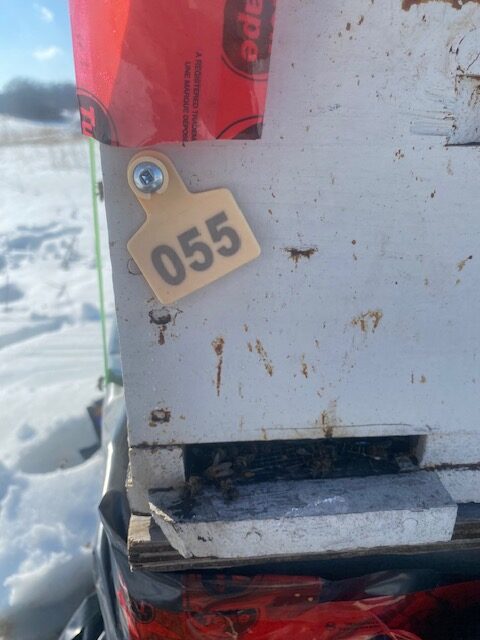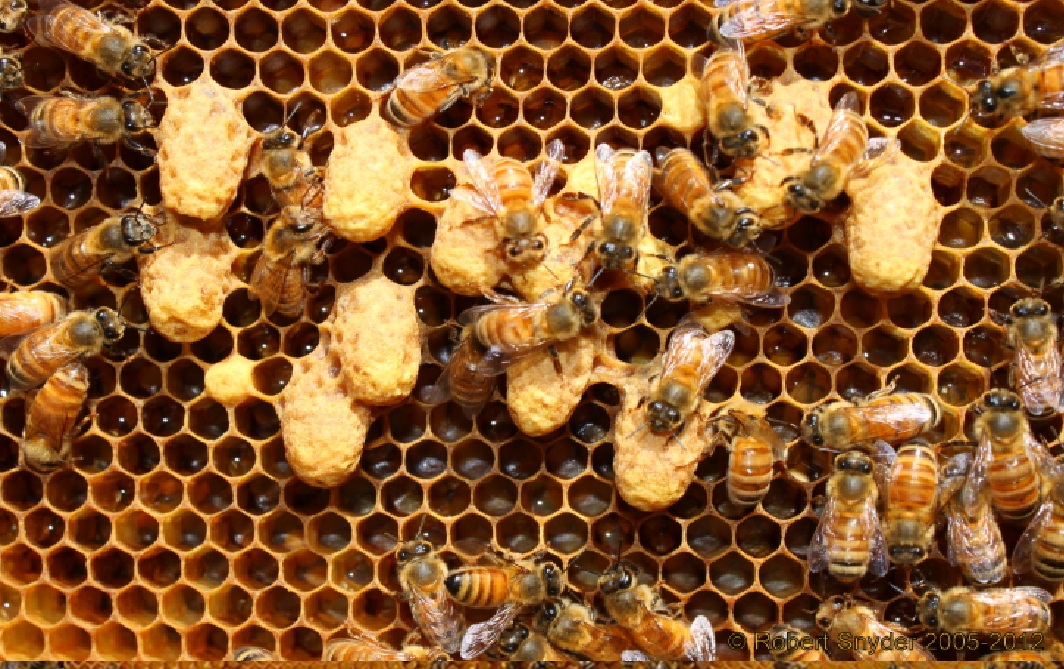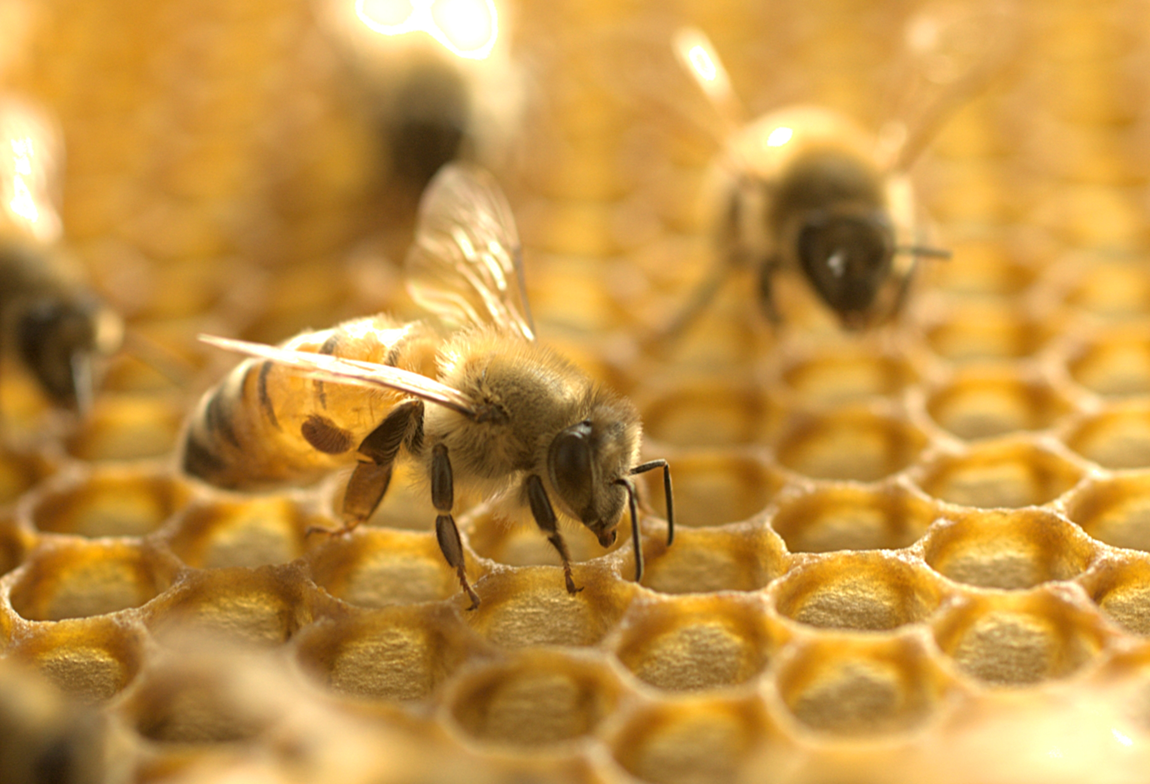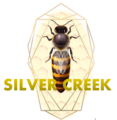There might have been a time when the environment supplied everything a bee needed from minerals to probiotics, the right balance of protein and carbohydrates. If we looked at an arial map of North America from a pollinator’s point of view we would see vast deserts with narrow strips of foraging between vast wastelands.
Corn and beans fill fields that were once rich with flowers and clover. Orchards and vineyards are full of pesticides and residues. Highways and factories fill the air with residues. Cities change climates.
Feeding bees, like treating for varroa mites, must evolve as the environment devolves. We only need to look at the life expectancy of a hive. At one time farmers put a couple hives on the edge of a field and only disturbed them when they needed more honey.
The life expectancy of a hive was never a concern. Now, statistically, a hive has a maximum of a 3-year life. Beekeepers all have their own ideas, mostly based on experience, but one thing they do agree on is that only healthy hives overwinter. If you have a weak hie in the fall then it won’t overwinter.
Once they make this statement then beekeepers stops short of telling new beekeepers HOW to raise healthy bees.
My Understanding of Bee Health and Nutrition – Bee Gut
To understand nutrition, you need to start from the inside and work out. The bee gut microbes’ effect both digestion and the bee’s immune system.
Evidence shows that consuming large quantities of high-quality pollen (multi-color) will decrease susceptibility to the gut parasite Nosema ceranae, lower pathogen loads, improve immunity and overwintering success, improve dron’s semen quality, and result in healthier honey bees that are better able to counteract pesticide stress, disease incidences, transportation stress, and parasitic pressures.1,2, A.
Should we be worrying about mites, overwintering, or honey production? Or, should we focus on the health of each individual bee?
If the bees are healthy, then won’t it improve health, production, and overwintering?
This year we focused on gut health April to July. Then we let the bees eat their honey, bring in nectar, and keep their pollen. (we harvest pollen). We collected data from the production of both seasons. Next year, 2025, we are going to feed in the fall as we did in the spring. I will post our data.
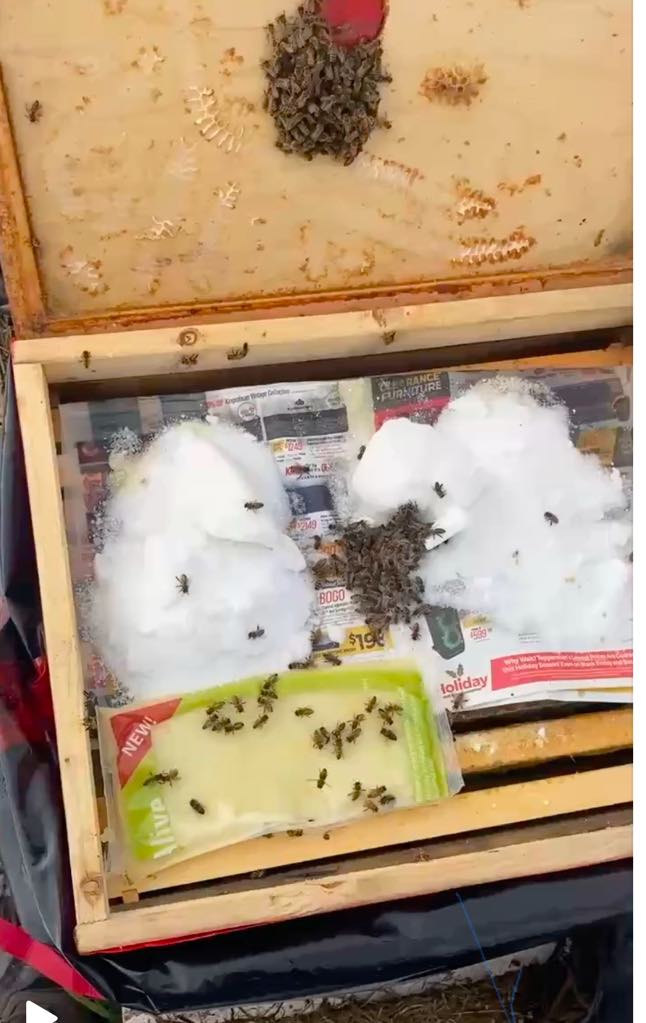
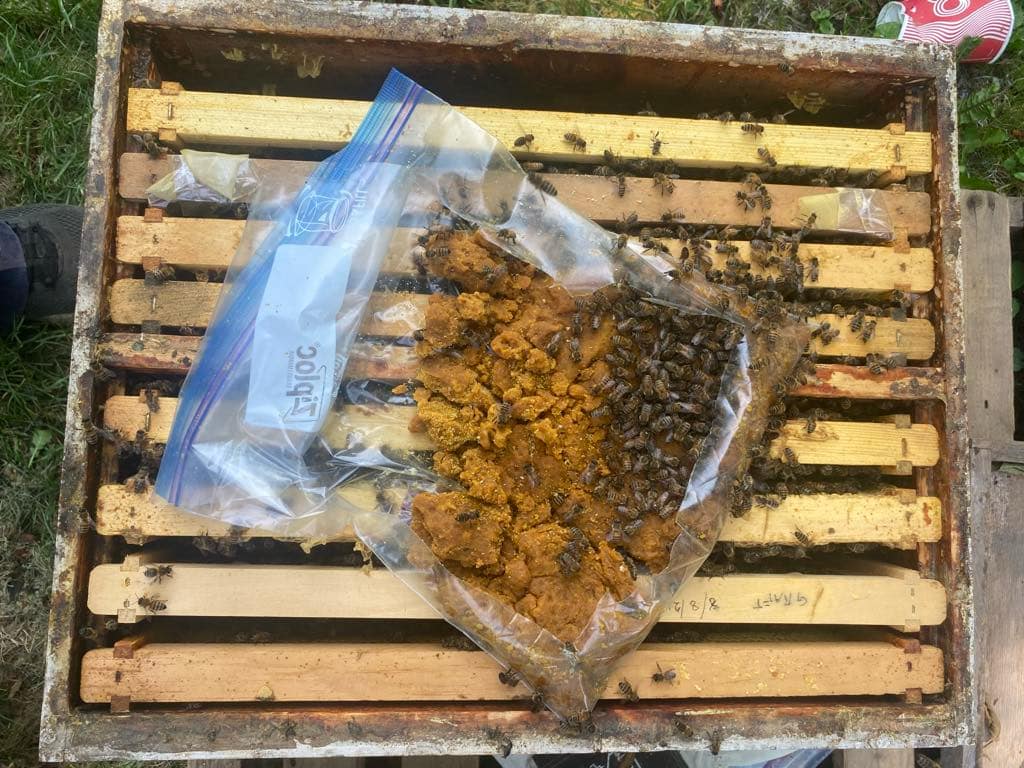
This all Starts With Microbes In The Bee Gut.
- Edit Nov 2024, John had an exciting chat today with members of the gut health research from University of Guelph. I watched the presentation on the virtual conference zoom link and it was a very well done and informative research presentation. John talked to the tech after the presentation and we will definitely be working with them in the future. (we do not mention names until their papers are reviewed and published. Once they are published I will include all names, and cite the paper.
This year we started to feed probiotics, and we did see a major boost in the early spring brood. The best part is that the probiotics are easy to obtain, and easy to use by a hobby beekeeper. We used Super DFM Honey Bee Probiotics starting in April, and monthly after that. What we noticed.
- We were splitting packages after 4 weeks, and the hives remained solid through the summer. I will update next spring with my overwinter numbers.
- Only 1 hive this summer in the home yard had chalk brood and it disappeared in 2 weeks(Buckfast hygienic queen). And 3 hives in the Dorchester (Carni cross – hygienic was never tested).
- 20% of the hives were still laying full frames (one hive had 3) in November.
- Most of our hives had 10 frames of bees in the 3rd week of October.
Probiotics was not the only thing we did this year, but it was a contributing factor. My biggest regret is that I ran out of pro biotics and hive alive in August and was not able to buy more. I really wish I had been able to feed both through the fall.
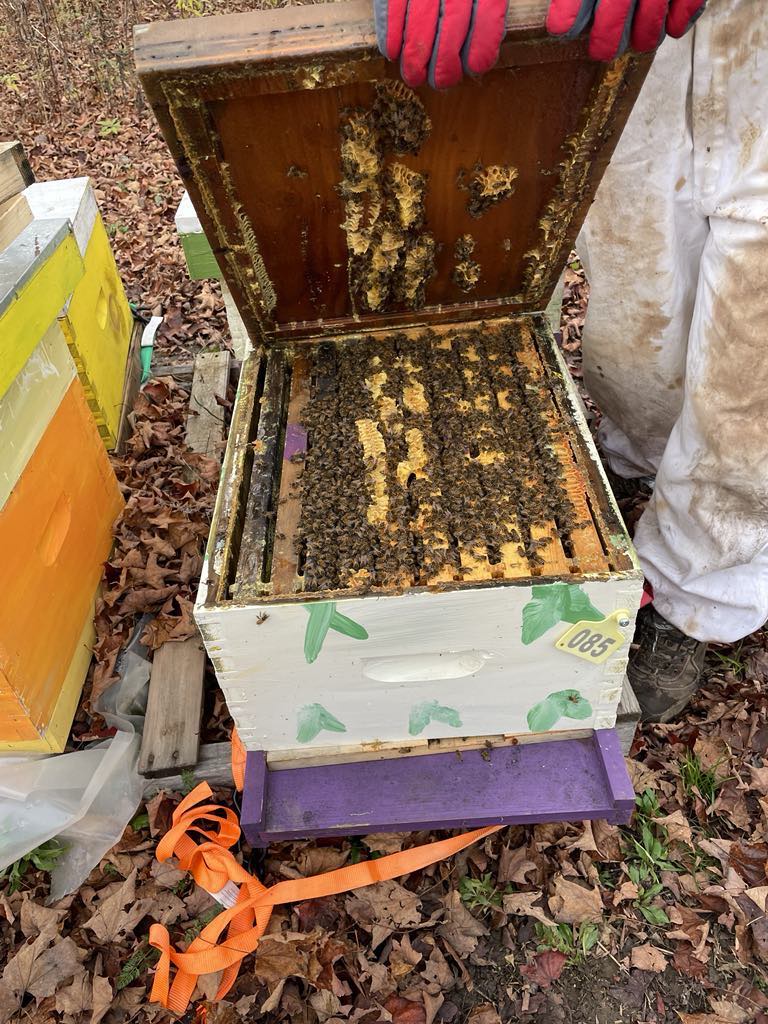
“This hive is one of our hives in Decmeber 2024. This was the norm, even though we only fed sugar and ultrabee in the fall. We didn’t feed probiotics or hive alive. Only because the stores were out. Next year we are buying a year’s worth in April. “
The important thing that I found was, September to November was horrible for mites. Yet, at least 80% of our hives were this strong in December. This is the first year we’ve had more than 4-5 frames of bees in December. And, many times they overwintered well. In fact, about 20% of our bees had 9-10 frames this year.
Why did these bees do so well with a bad mite load in the fall. (we used oxy vape bi weekly all fall). ” Suzanne Wiebe
Pollen is Not All Created Equal.
Another thing we did this year was to collect pollen for our queen bee cell starters and for our brood factories. At first we feed pollen patties but they are only 10% pollen. We followed Michale Palmer’s method of just packing a drawn comb frame with pollen and putting it beside the grafting frame. This worked very well. The virgins emerged large and active. We also believe the combination of hive alive, pollen, and probiotics contributed to a higher-than-normal number of mated queens.
More important was the fact that the pollen we used was multicolored. I never had it analyzed but have read enough about pollen to realize that each colour has a different nutritional value.
Next year I am saving the best pollen for queens and for making pollen patties in September. I will be using pollen earlier in the spring. 3,4
Feeding Bees Sugar
This is the first year we fed sugar through the dearth (dry spell). In our area this year it started about the second week of August and ended in September. We took the honey supers off before feeding and left the rest of the honey for the bees to overwinter with.
Our theory was that if the bees were not stressed the month before preparing for winter they would be able to prepare properly. This year we used 40x 55lb bags of sugar but felt that we should have doubled that for 130 hives.
We are going to use sugar as supplemental feed on the top of the hives following the method used by dancingbee and other beekeepers. We are using condensing hive wraps this winter, and understand that the bees need to drink water in the winter.
However, the bees are still flying November 15. I am concerned that a) the hives will lose a lot of bees by January when they need them (they are flying they are dying), and b) that they will use most of their honey stores before the cold weather hits.
The source of the plain white sugar doesn’t really matter. Refined table sugar (sucrose) is a disaccharide derived from glucose and fructose and has the molecular formula C12H22O11. It is the same whether it came from cane or beets.
Hive Alive and Ultrabee
I do not need to write a lot about this product except to state that they are worth the investment. We fed hive alive through the spring and in the dearth. Next year I want to feed it any time the bees are not collecting nectar, or on brood factories (we do not collect the honey off of these). We make pollen patties from ultrabee with 20% pollen added back in, and some sugar to make it more palatable. –
More Reading – Click to download the research papers.
I am citing some of the resources I used when I developed my theories. This way you can do your own research and develop your own theories and methods.
- . Brodschneider R, Crailsheim K. Nutrition and health in honey bees. Apidologie
2010;41:278–94.
- Di Pasquale G, Salignon M, Le Conte Y, et al. Influence of Pollen Nutrition on
Honey Bee Health: Do Pollen Quality and Diversity Matter? PLOS ONE 2013;
8:e72016.
- Brodschneider, Robert & Crailsheim, Karl. (2010). Nutrition and health in honey bees. http://dx.doi.org/10.1051/apido/2010012. 41. 10.1051/apido/2010012.
- Adequate nutrition supports the development of healthy honey bee colonies. We give an overview of the nutritional demands
- of honey bee workers at three levels: (1) colony nutrition with the possibility of supplementation of carbohydrates and proteins;
- (2) adult nutrition and (3) larval nutrition. Larvae are especially dependant on protein and brood production is strongly
- affected by shortages of this nutrient. The number of larvae reared may be reduced to maintain the quality of remaining offspring.
- The quality of developing workers also suffers under conditions of larval starvation, leading to slightly affected workers.
- Larval starvation, alone or in combination with other stressors, can weaken colonies. The potential of different diets to
- meet nutritional requirements or to improve survival or brood production is outlined. We discuss nutrition-related risks to
- honey bee colonies such as starvation, monocultures, genetically modified crops and pesticides in pollen and nectar.
- Tsuruda, Jennifer & Chakrabarti Basu, Priyadarshini & Sagili, Ramesh. (2021). Honey Bee Nutrition. 10.1016/j.cvfa.2021.06.006.
Optimal nutrition is crucial for honeybee colony growth and robust immune systems. Honeybee nutrition is complex and depends on the floral composition of the landscape. Foraging behavior of honeybees depends on both colony environment and external environment. There are significant gaps in knowledge regarding honeybee nutrition, and hence no optimal diet is available for honey bees, as there is for other livestock. In this review, we discuss (1) foraging behavior of honeybees, (2) nutritional needs, (3) nutritional supplements used by beekeepers, (4) probiotics, and (5) supplemental forage and efforts integrating floral diversity into cropping systems.
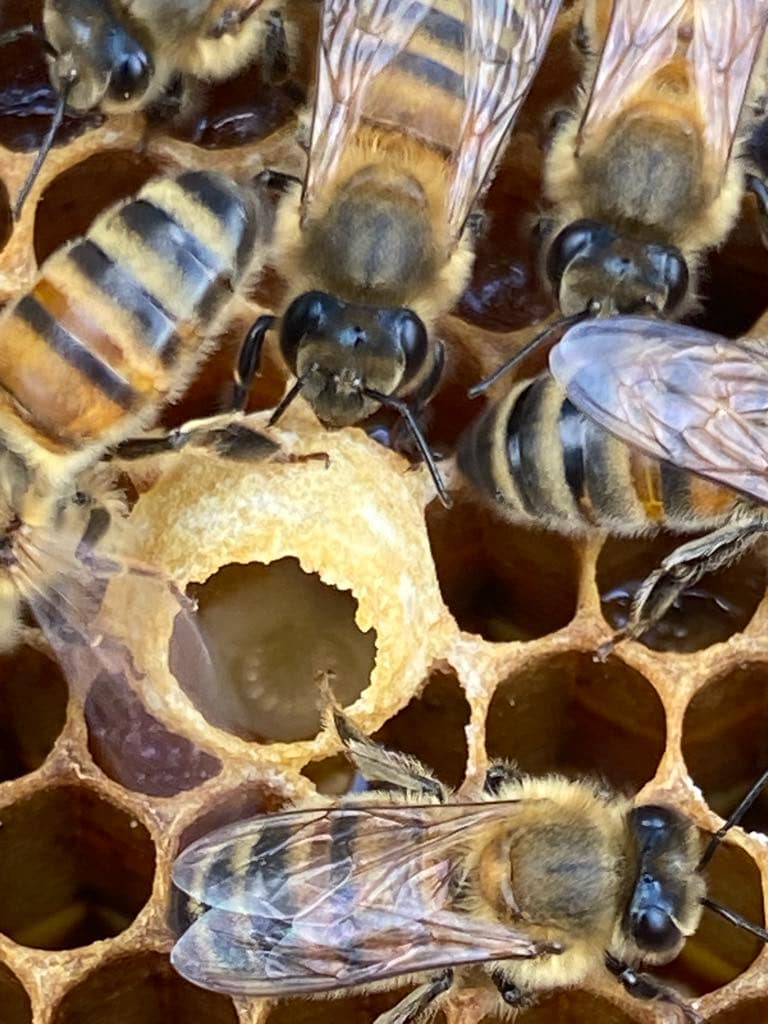
Do Not Sell Sugar Water Honey
Note: We feed the breeder yards with sugar all year. That be because all the honey is fed back to the bees, or used for overwintering.
We only feed the production yards early spring so they can build up, but as soon as they start putting up honey we stop. Never process frames that are ‘sugar water’. Only collect honey for human consumption if it comes from flowers and trees.

